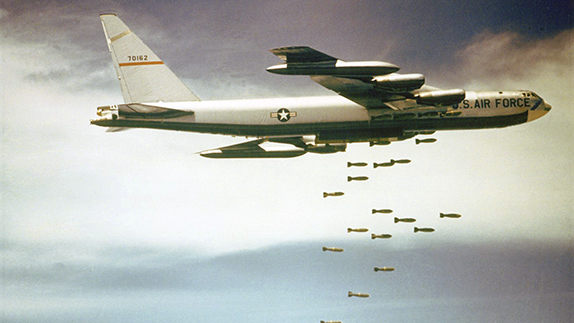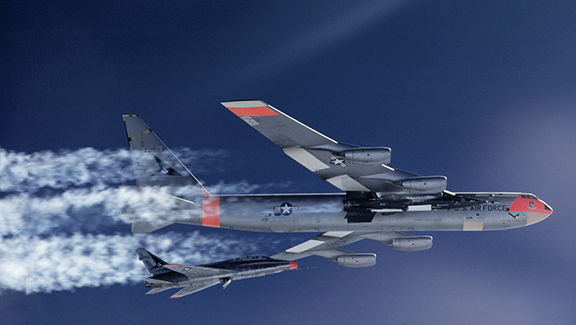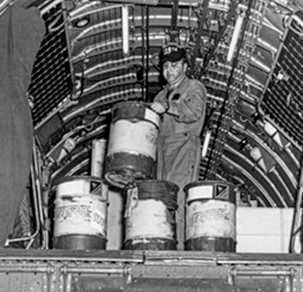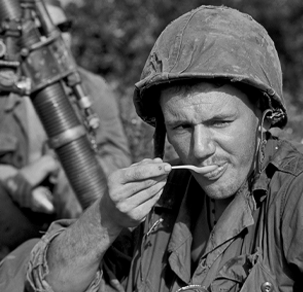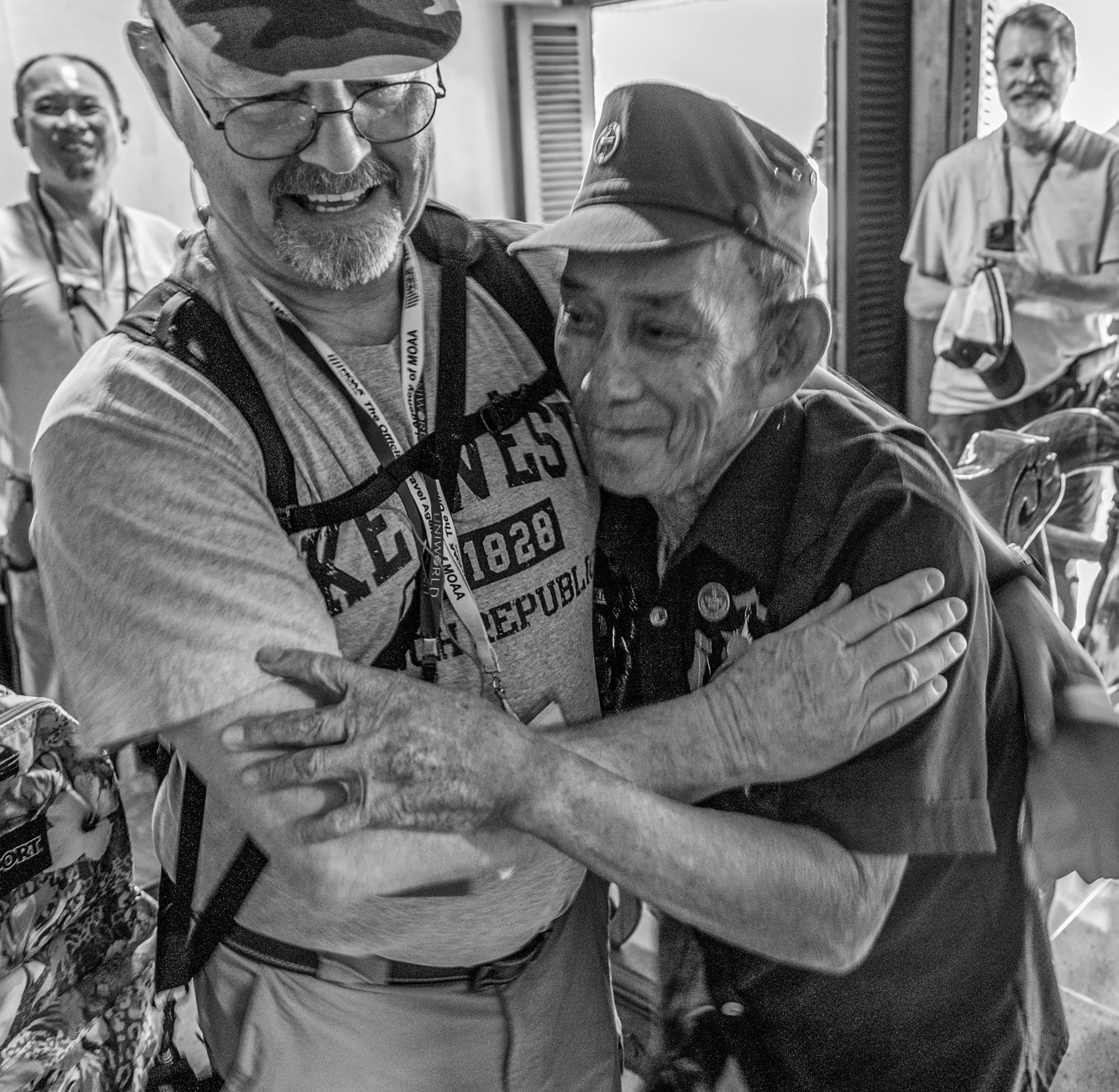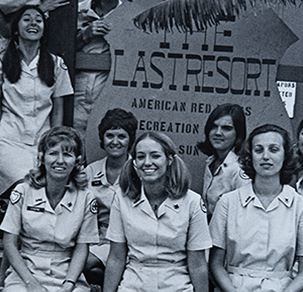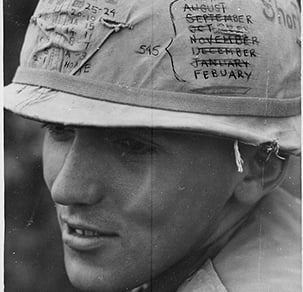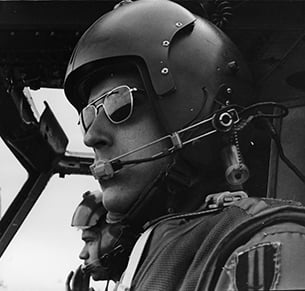By Hope Hodge Seck
Russell Stephenson served three tours in Vietnam as a young B-52 Stratofortress bomber crew member under what was known as Operation Arc Light, but nothing terrified him more than the 27 missions he flew during the 1968 Tet Offensive in support of Marines holding off North Vietnamese ground troops at Khe Sanh in the country’s Quang Tri province. Despite the danger the ungainly bomber posed to all troops in the vicinity, the Marine grunts couldn’t get enough of the 500-pound bombs they delivered by the hundreds on enemy positions. Each B-52 could carry more than 100.
“Those guys wanted us dropping as close as possible,” recalled Stephenson, now a retired colonel. “And every time we went in and dropped, they said, ‘closer.’ If you think about the Vietnam era, we weren’t carrying smart bombs like they do nowadays. So it was scary when you got in dropping close to things like that.”
Army Gen. William Westmoreland, who had command of all U.S. troops in Vietnam between 1964-68, would later say the B-52s had been responsible for breaking the spirits of the North Vietnamese Army (NVA) during the battle. It wouldn’t be the last time the Stratofortress would play a defining role in Vietnam.
The B-52Bs entered service in 1955 and joined the drawn-out fight in Vietnam a decade later. Hulking, with a 185-foot wingspan, the bomber didn’t win any beauty contests; aircrews nicknamed it the BUFF, for “Big Ugly Fat Fellow,” or crasser variants. But its reliability and reputation for making it home from the sportiest missions made them love it loyally nonetheless.
A DREAM IN OHIO
The origins of the B-52 are as legendary as the airframe itself. Former Air Force Capt. Robert O. Harder, a Vietnam-era B-52 navigator-bombardier who has written extensively about the airframe, said the Air Force had found itself in a bomber crisis several years after the conclusion of World War II: the B-36 Peacemaker was nearing obsoletion by the time it entered service in 1948, and the B-47 Stratojet, also in development, didn’t have the range and payload the service really needed to accomplish its global mission. Enter Curtis LeMay, the legendary general who’d become Air Force chief of staff in 1961. He delivered his own desired specifications to Boeing designers, prompting a 1948 design session that would enter the history books.
“The B-52 was first dreamt up in a hotel room in [Dayton] Ohio over a three-day weekend, believe it or not,” Harder said.
The resulting Stratofortress, with its 244-ton maximum takeoff weight, eight turbojet engines, and unrefueled combat range of greater than 8,800 miles, had two serendipitous gifts built in. First: It was built large enough to accommodate the bulky radars and technical equipment it needed to carry.
As the “guts” of the aircraft became more compact with technological improvements over the years, more space became available for ordnance and comms gear, Harder said, making the bomber more versatile and effective.
Second, the bomber was substantially overengineered, Stephenson and Harder said. Though originally intended for high-altitude bombing missions, it would prove more than capable, with some modifications, of radar-penetrating low-level passes. Today, it can also carry nearly every munition in the U.S. arsenal, more than any other airframe.
Ultimately, the Air Force would build eight B-52 variants by 1962, designating them A through H. The B-52D, popular in Vietnam, had a tail gun that would allow crew to down two NVA MiG-21s on separate missions. The B-52H added powerful Pratt and Whitney turbofan engines and would become the longest-lived aircraft. Of the 744 B-52s built, 76, all H variants, remain in service.
VIETNAM AND BEYOND
In Vietnam, the impact of the bomber was never felt more deeply than during Operation Linebacker II, an 11-day strategic bombing campaign that played out in the last half of December 1972. Over the course of the “Christmas bombings,” 20,000 tons of ordnance were dropped on targets in Hanoi and Haiphong. Some 16 B-52s and 43 crew members were lost in the fight by U.S. reckoning, but the catastrophic damage the bombers inflicted had the desired effect: It helped to bring North Vietnam to the negotiating table for the Paris Peace Accords and would ultimately be the last U.S. major military operation of the war.
Stephenson, now president of the B-52 Stratofortress Association, still wonders if unleashing the full power of the BUFF earlier in the conflict would have brought the fight to an earlier or more conclusive resolution.
“If our political leaders had let us prosecute the Vietnam War as we should have in 1966, early ’67, we’d have stopped the war because we’d have sent the B-52s to Hanoi,” Stephenson said.
Though Harder would write about Operation Linebacker II from the perspective of B-52 navigator-bombardiers in his 2009 book Flying From the Black Hole (Naval Institute Press), when he thinks about the most poignant impact of the bomber in Vietnam, he returns to ground-support missions like Khe Sanh.
“I talked to very few ground troops, Marines or ‘dog faces,’ that don’t really appreciate the B-52,” Harder said. “We were easily the most important close-support weapon that we had for the ground troops. We took great pride in being able to do that.”
Despite the aircraft’s size, conditions for the five crew members within were never comfortable, Harder said. The aircraft could get filthy inside, and controlling the weapons and navigation systems required hard physical labor. But its reliability endeared it to its operators.
“It was a smelly, nasty, noisy, fatiguing, irritating airplane,” he said. “[But] ... they always got home. It might burp and limp and groan. But it always came through when it really needed to.”
Even after B-52s stopped rolling off the production line, the Air Force continued to push the bomber’s limits and find new ways to employ it. Warren Ward, now a retired colonel, was chosen to pilot one of two aircraft for the BUFF’s round-the-world flight in 1994, a 47-hour demonstration of the plane’s ability to conduct what Air Combat Command called “global power missions” and the first time a B-52 dropped bombs during a round-the-world flight.
After takeoff, the planes flew east, imitating the route Ward had flown on bombing missions over the “highway of death” between Iraq and Kuwait in 1991. Nearly two days, multiple aerial refuelings, and one unplanned Filipino typhoon later, Ward landed to a hero’s welcome that included fire trucks spraying arcs of water onto the tarmac.
After Ward retired and continued to work in leadership at Air Force Global Strike Command at Barksdale AFB, La., he marveled to see the bombers that made the round-the-world flight continue to remain operational and on the ramp at the base.
“The airplane’s going to be around forever, I guess … it just won’t die,” Ward said.
AN AIRCRAFT FOR THE FUTURE
A massive modernization and reengining effort now underway aims to ensure the B-52 will live on — at least long enough to reach its centennial. Air Force budget documents published this spring confirmed the aircraft that receive the upgrades will be designated the B-52J — the first new variant in six decades and a nod to the dramatic improvement in technology and capability the modernization will provide. And at least one retired 1960s-era B-52H is helping to chart a course to that future.
In January 2022, a BUFF known as “Damage Inc. II” was pulled out of the Air Force “boneyard” at Davis-Monthan AFB, Ariz., and trucked nearly 1,000 miles to a Boeing systems integration laboratory near Tinker AFB, Okla., to be 3D scanned and used as a tester for installation of new components, like the upgraded hydraulic system under development.
According to Jennifer Wong, senior director of bombers programs for Boeing, the two-part upgrade process will begin with a radar modernization program that will install a multimode radar, with a wide-band radome on the bomber’s nose and two high-definition touch-screen displays at the controls for precision navigation accuracy and target detection. The second part of the process is the commercial engine replacement program, or CERP, which will install fuel-efficient Rolls-Royce jet engines in redesigned two-engine nacelles while preserving the B-52’s “iconic eight-engine configuration,” Wong said. CERP will also overhaul the B-52’s cockpit controls, displays, and flight avionics and upgrade the bomber’s electronic generators, power distribution system, and hydraulic and pneumatic systems.
For the early crews of the B-52, preserving the aircraft’s legacy remains a priority. The B-52 Stratofortress Association hosts reunions that draw enthusiasts from as far away as Sweden; members are also saving to repaint a retired BUFF that has fallen into disrepair in a Michigan museum. It’s all a labor of love for a plane that has taken so many to war, then brought them safely home.
Hope Hodge Seck is a writer on military issues who is based in the Washington, D.C., area.
